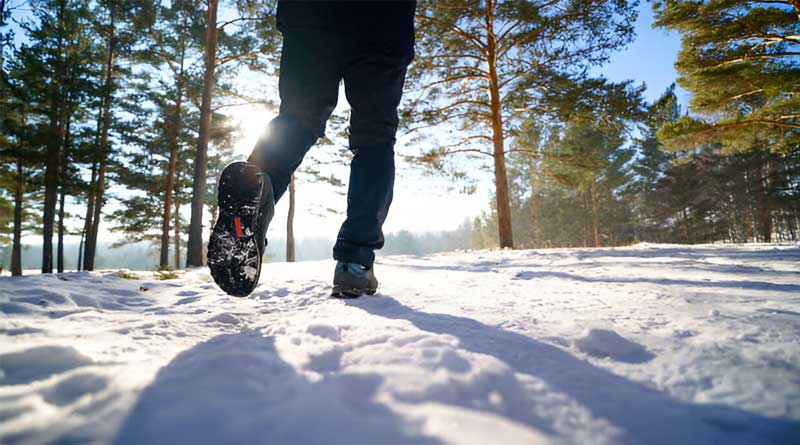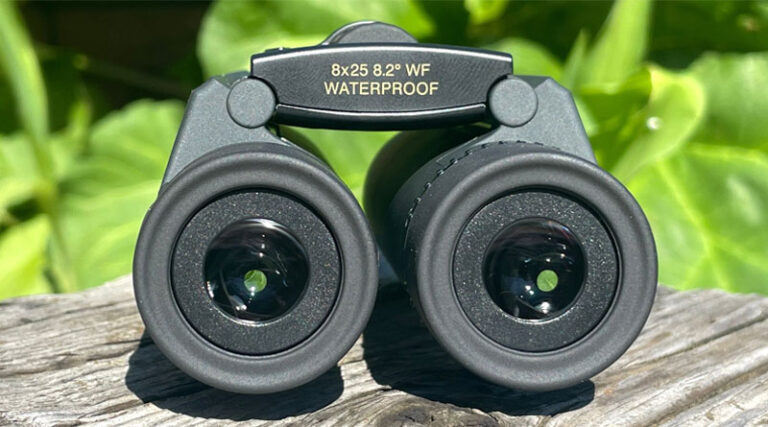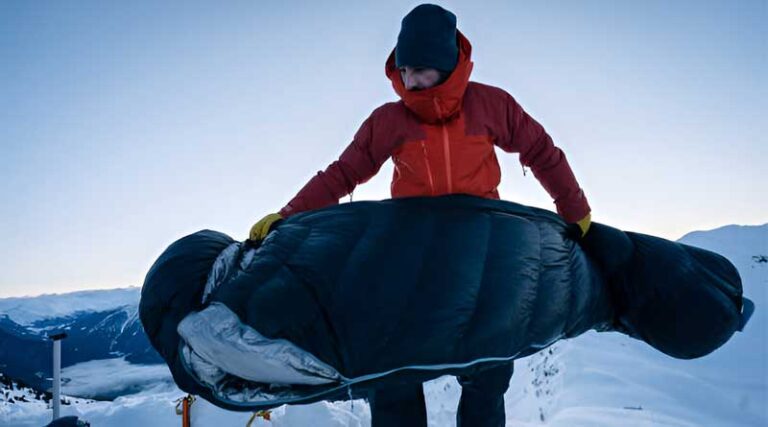Winter hiking in the UK needs strong, warm, and waterproof boots. Wet trails, snow, and cold weather make good boots essential. The right pair keeps your feet dry and warm. It also gives you grip on icy and muddy paths. Some boots are better for short walks, others for long hikes. This guide helps you pick the best winter hiking boots. We’ve looked at comfort, warmth, grip, and waterproofing. We’ve also considered price and durability. Whether you hike in the hills or walk the dog in the snow, we’ve got you covered. Read on to find the perfect winter boots for your needs. Stay warm, dry, and safe this winter.
1. Columbia Fairbanks

- OMNI-TECH: Waterproof, breathable, and seam-sealed for protection in rain and snow.
- OMNI-HEAT: Reflective lining that retains body heat for warmth in cold weather.
- TECHLITE: Lightweight midsole with strong cushioning and high energy return.
- OMNI-GRIP: Excellent traction with multi-terrain grip for wet and dry surfaces.
The Columbia Fairbanks is a great winter boot for everyday use. It was first bought for walking the dog in cold, wet weather. It turned out to be so light and comfy that it’s now worn daily in winter. These boots are warm, waterproof, and easy to clean after muddy walks. The Cordura upper keeps feet dry, and the 200g insulation keeps them warm even in snow. They also look stylish, which makes them a great all-rounder.
Sizing runs a little small. A size 9 fit well on a size 8–8.5 foot, even with cotton socks. For thicker socks or more space, go half a size up. The same goes for the women’s version. My wife sized up from 6 to 6.5, and they fit perfectly. The boots offer good grip and feel steady on ice and mud. They’re very easy to care for—just wipe clean after use. These boots tick all the boxes: warm, light, waterproof, and durable.
Pros:
- Very warm and waterproof
- Comfortable and lightweight
- Excellent grip in slippery conditions
- Easy to clean and care for
Cons:
- Sizing runs slightly small
- Not ideal for wide feet
See the Columbia Fairbanks See the Women’s Moritza
2. NORTIV 8 Waterproof Snow Boots

- Warming System: 200g 3M Thinsulate insulation keeps feet warm in temperatures as low as -25°F.
- Waterproof Material: Seam-sealed and windproof with a synthetic toe cap for extra protection.
- Durable & Slip Resistant: Thick rubber outsole offers stability, slip resistance, and good traction.
- For Outdoor & Indoor: Suitable for daily winter use and outdoor activities like skiing, camping, and mountaineering.
The NORTIV 8 Waterproof Snow Boots are excellent for cold weather and snowy conditions. They use 200g 3M Thinsulate, one of the warmest thin insulations available. This keeps your feet warm even in very low temperatures, around -25°F. The boots are waterproof and windproof with a tough synthetic toe cap. This means your feet stay dry and safe from bumps. They have a strong rubber sole that grips well on slippery surfaces. This makes them perfect for winter walks, snow, or icy paths.
These boots are easy to put on and take off, which is very helpful after a long day outside. The sizing advice is very important. Measuring your foot and adding 13mm gave a perfect fit with thick socks. They worked perfectly on a walking holiday in the Allgäu, keeping feet warm and secure. Whether you are hiking, camping, or just walking in snow, these boots handle the cold and wet well. They are a solid choice for winter footwear.
Pros:
- Very warm insulation for extreme cold
- Waterproof and windproof construction
- Slip-resistant, durable sole
- Easy to put on and take off
Cons:
- Requires careful sizing using the size chart
- May feel bulky for casual indoor wear
See the NORTIV 8 See the Women’s NORTIV 8
3. Berghaus Hillmaster II GTX

- Interactive Design: Memory foam collar and tongue for a tailored, comfortable fit.
- Vibram Rubber Outsole: Provides excellent grip on wet rocks and slippery terrain.
- Waterproof Guarantee: Breathable GORE-TEX membrane keeps feet dry and allows sweat to escape.
- Supportive Features: Anti-clogging outsole and shock-absorbing midsole for energy-efficient walking.
The Berghaus Hillmaster II GTX is a classic walking boot updated with modern features. It fits well, even for wider feet and those with bunions. Memory foam around the ankle and tongue shapes to your foot for great comfort. The tough leather is strong but soft, resisting scrapes. You can adjust the laces easily to fit your foot. These boots are very sturdy and comfortable, making long walks easier. They also look good and feel solid underfoot.
These boots are truly waterproof thanks to the GORE-TEX membrane. I tested them in rain, snow, and even puddles up to 4 inches deep. My feet stayed completely dry and warm. The Vibram sole grips well on slippery rocks and icy paths, so slipping is less likely. The midsole absorbs shocks, helping you save energy on tough trails. Overall, they are perfect for harsh UK winters and rugged walks. They are a smart investment for anyone serious about hiking.
Pros:
- Comfortable, tailored fit with memory foam
- Excellent grip on wet and icy surfaces
- Waterproof and breathable with GORE-TEX
- Durable and supportive for long walks
Cons:
- May require initial break-in with leather treatment
- Slightly heavy for casual everyday use
See the Berghaus Hillmaster II GTX See the Women’s Expeditor Ridge 2.0
4. Bella Bays Winter Snow Boots

- Waterproof Fabric: Made of umbrella fiber material to repel water and snow, keeping feet dry and warm.
- Anti-Skid Outsole: PU material with slip resistance, cushioning, shock absorption, and wear resistance.
- Warm Plush Lining: High-density plush inside for a soft, comfortable feel and excellent warmth.
- Lace-Up Design with Faux Fur Trim: Provides a secure fit and stylish, cozy look.
The Bella Bays Winter Snow Boots are perfect for cold and wet conditions. They keep feet warm and dry even on long winter walks. The boots fit true to size and feel very comfortable. The plush lining feels soft and snug, adding extra warmth on cold days. The lace-up design helps to get a tight and secure fit, while the faux fur trim adds a nice touch of style. These boots handle well on snow and slippery paths, giving you confidence on icy ground.
Living in a snowy, mountainous area, these boots have been a real help. They keep feet dry no matter how much snow or wet you walk through. The grip on the boots is strong, so slipping is less likely even on icy surfaces. Using thick socks with them adds more warmth without making feet feel cramped. Overall, these boots are a great choice for winter outdoor activities like walking, skiing, or just everyday use in cold weather.
Pros:
- Very warm with soft plush lining
- Waterproof and keeps feet dry
- Excellent grip on slippery surfaces
- Stylish with faux fur trim and secure laces
Cons:
- Slight crease from packaging takes a few days to flatten
- May feel bulky for some users at first
See the Bella Bays Winter Snow Boots
5. Polar Winter Snow Boots

- Upper: Made with high-quality premium materials for durability and comfort.
- Fully Fur Lined: Lined with premium faux fur for warmth, comfort, and insulation.
- Durable & Anti-Skid Rubber Sole: Waterproof with deep tread for grip on snow, ice, and wet surfaces.
- Lace-Up Design: Quick tie laces through fixed steel eyelets for secure fastening.
The Polar Winter Snow Boots are a solid choice for cold, wet weather. They are fully lined with soft faux fur that keeps feet warm and cozy. The boots feel comfortable even during long walks, without making feet feel sweaty or tight. The upper materials are strong and built to last. Although they look a bit like “moonboots,” they still look smart enough to wear with jeans. The lace-up design ensures a snug fit, so the boots stay on well in all conditions.
The rubber sole offers good traction, making it easier to walk safely on ice and snow. At first, the sole feels hard compared to running shoes, but adding insoles makes them feel better. They are waterproof and keep feet dry in heavy rain or snow. These boots are lightweight for winter boots and don’t feel bulky or heavy. For the price, they meet all the needs for winter walks and dog walking. They fit true to size, but going one size up is recommended for thicker socks.
Pros:
- Very warm and comfortable with full fur lining
- Durable and waterproof with strong grip soles
- Secure fit with quick tie laces
- Lightweight and not too bulky for winter boots
Cons:
- Appearance is a bit bulky (“moonboot” style)
- Sole feels hard at first, may need added insoles
See the Polar Winter Snow Boots
6. Riemot Snow Boots

- Warm & Comfortable: 3M 200B Thinsulate insulation and removable insoles.
- Waterproof & Wear-Resistant: Waterproof TR shell bottom with rubber sole.
- Special Design: Gusset tongue prevents snow, water, and debris from entering the boots.
- Good Ankle Support: High-rise design offers strong ankle support and protection.
The Riemot Snow Boots are very warm and comfortable thanks to the 3M Thinsulate insulation. The removable insoles help keep feet cozy and breathable during winter adventures. The gusset tongue design stops snow, water, and pebbles from getting inside. The boots lace up at the front, making them easy to slip on and off. They provide good ankle support with their high-rise build, which helps prevent injuries. The rugged look suits outdoor winter activities well.
While the boots offer decent grip and strong waterproofing, some parts showed wear after less than a year. The heel tore and needed gluing, and one lace holder broke. The soles were quite thin, so extra insoles were needed for comfort and heel support. Despite these issues, the boots stayed very warm and waterproof. The grip is good but could be better on slippery surfaces. Overall, they are comfortable once insoles are added, and the buyer would purchase them again.
Pros:
- Very warm and waterproof
- Good ankle support and snug fit
- Durable upper and waterproof shell
- Easy to put on and take off
Cons:
- Heel and lace holder showed wear quickly
- Thin sole padding requires extra insoles
- Grip is good but could be improved
7. Mountain Warehouse Ohio – Women’s

- Isotherm Insulation: Densely packed fibres keep heat in without adding weight or discomfort.
- Snow Proof: Treated with Durable Water Repellent (DWR) to handle packed snow.
- Thermal Tested: Laboratory tested to perform well in temperatures down to -20°C.
- Faux Fur Lining: Synthetic fur adds warmth, comfort, and style.
The Mountain Warehouse Ohio boots are great for cold and snowy weather. They fit true to size and feel comfortable even with thick socks. The boots are taller than they look, giving a stylish, modern look. They are fully waterproof, perfect for snow and wet conditions. At first, they feel different from regular shoes because they are made for hiking and snow walking. But they quickly become easy to wear. The boots are lightweight, which is great for people who feel pain with heavy shoes. The lace system is clever and quick to use, making putting on and taking off simple.
These boots keep feet very warm thanks to the Isotherm insulation and cozy faux fur lining. They also repel snow well because of the DWR treatment. Tested in labs for cold weather down to -20°C, they are reliable in harsh winters. They are strong and durable while still looking good enough for city use. The reviewer paid around £40 and thinks they are excellent value. Overall, these boots are perfect for anyone who wants warmth, comfort, and style on winter walks or trips to snowy places.
Pros:
- Very warm with Isotherm insulation and faux fur lining
- Fully waterproof with snow-proof DWR treatment
- Lightweight and comfortable for sensitive feet
- Easy to lace up and take off
Cons:
- Feels different at first, takes time to get used to
- Style may not suit everyone’s taste
See the Mountain Warehouse Ohio
How to Choose Winter Hiking Boots in the UK
Walking or hiking can be magical but also challenging. The cold, wet weather, slippery paths, and muddy trails need the right footwear. A good pair of hiking boots will keep your feet warm, dry, and comfortable. But how do you choose the best boots for winter hiking in the UK? This guide will help you understand what to look for and make a smart choice.
1. Know the Weather and Terrain in the UK
Before buying boots, think about where and when you will hike. UK winters vary by region. Scotland’s Highlands get a lot of snow and cold, while southern England usually has milder, wetter winters. You might face muddy trails, icy patches, or snowy hills.
Hiking boots must handle wet conditions and cold temperatures. Look for boots that are waterproof and insulated. Also, UK trails can be rocky or muddy. Boots with good grip and strong soles will keep you steady on different surfaces.
2. Waterproofing Is Essential
The UK is famous for its rain and damp weather. Waterproof boots are a must. They stop water from soaking in and keep your feet dry. Dry feet are warmer feet.
Look for boots with materials like Gore-Tex or other waterproof membranes. These materials block water but still let sweat escape. This means your feet won’t get wet from outside or feel sweaty inside.
Some boots are treated with Durable Water Repellent (DWR) on the outside. This helps water bead off the surface, adding extra protection.
3. Warmth and Insulation Matter
Winter walking means cold temperatures. Insulated boots help keep your feet warm for hours outdoors. Insulation comes in different types and amounts. For UK winters, you need boots with enough insulation but not too heavy.
Look for boots with Thinsulate or synthetic insulation. These materials keep warmth in without bulk. Some boots also have fleece or faux fur lining inside for added comfort.
Remember, you can also wear thick hiking socks for extra warmth. But it’s best to choose boots with good insulation to start with.
4. Fit and Comfort Are Key
Boots that don’t fit well can ruin a hike. Cold weather can cause your feet to swell a bit, so boots need a little extra room. But too much space will cause rubbing and blisters.
Try boots on with the socks you plan to wear hiking. Walk around the store or your home to check how they feel. Make sure your toes have some wiggle room but aren’t sliding forward.
In winter, you might wear thicker socks. Some people buy boots half a size bigger to allow for this. Check the return policy if you buy online, just in case.
5. Sole and Traction for Slippery Surfaces
Winter trails can be icy or muddy. Good soles with strong grip are vital for safety. Look for boots with deep lugs and slip-resistant rubber.
Many boots have soles made by Vibram, a trusted brand known for great traction. Anti-slip soles reduce the risk of falls on wet rocks, ice, or snow.
Some boots also have special designs to stop mud or snow from clogging the sole. This keeps your footing firm no matter the surface.
6. Weight and Flexibility
Winter boots often have extra insulation and waterproof layers, so they can be heavier than summer boots. But heavy boots can tire your feet quickly.
Look for boots that balance warmth and weight. Lightweight boots are easier to walk in for longer. Flexibility is important too. Boots that bend well at the ankle and foot give you more comfort and better control.
If you plan long hikes or carrying a heavy pack, lighter boots with good support can help prevent fatigue.
7. Ankle Support for Rough Terrain
Winter hikes in the UK can include uneven ground, rocks, and slippery slopes. Boots with good ankle support help prevent twists and injuries.
High-cut boots protect your ankle and give stability. They also stop snow and debris from getting inside.
If you prefer lower boots for freedom of movement, make sure they still provide enough support for your feet.
8. Breathability and Moisture Management
Even in cold weather, your feet sweat during hiking. Moisture inside boots can make feet cold and uncomfortable. That’s why breathability is important.
Good hiking boots have membranes that let sweat escape but block rain. This helps keep your feet dry and comfortable all day.
Avoid boots made of non-breathable materials. They can cause blisters or cold feet from wet sweat inside.
9. Durability and Material Quality
Winter hiking boots face tough conditions. You want boots made with strong materials that last many seasons.
Leather boots are tough and offer good water resistance. They often last longer but need some care, like cleaning and waterproofing treatments.
Synthetic boots dry faster and are usually lighter. They can be more flexible but may wear out sooner.
Look for reinforced toes and heels for extra protection. Quality stitching and sealed seams also improve durability.
10. Price and Brand Reputation
Winter hiking boots come in a wide price range. More expensive boots often use better materials and technology, but not always.
Set a budget but focus on features like waterproofing, warmth, and comfort. A cheaper pair may not last as long or keep your feet dry.
Trusted outdoor brands like Berghaus, Columbia, Salomon, and Merrell make good boots for UK winters. Read reviews from other hikers to see how boots perform in real conditions.
11. Additional Tips
- Try Boots On Late in the Day: Feet swell during the day. Trying boots when feet are at their largest gives a better fit.
- Wear Hiking Socks When Trying On: Use the socks you plan to hike in for a realistic fit.
- Break In Your Boots: Wear new boots on short walks before a big hike to soften them up and avoid blisters.
- Consider Gaiters: If you hike in deep snow or wet grass, gaiters help keep water and snow out of your boots.
- Check the Return Policy: Buy from stores or websites with easy returns in case the boots don’t fit right.
Conclusion
Choosing the right winter hiking boots in the UK means finding boots that keep your feet dry, warm, and comfortable. Consider the weather and terrain you’ll face. Look for waterproofing, insulation, good fit, and strong grip. Don’t forget ankle support, breathability, and durability. Test your boots with the right socks and walk in them before serious hiking. A good pair of winter boots will make your outdoor adventures safer and more enjoyable, whether you’re exploring snowy hills in Scotland or muddy woodland paths in England. Take your time, do your research, and invest in quality boots that suit your needs.



